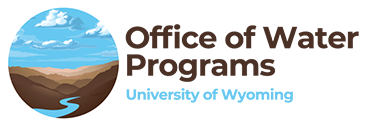Current WRP Projects: Project 26
Detecting the signature of glaciogenic cloud seeding in orographic snowstorms in Wyoming II: Further airborne cloud radar and lidar measurements
- Project Number: 26
- PIs: Dr. Bart Geerts, Assoc. Prof., Dept. of Atmospheric Science, University of Wyoming
- Status: Pending
- Period: 03/01/2009 - 02/29/2012
Abstract:
This proposal is linked both to the five-year Wyoming Weather Modification Pilot Program
(WWMPP), and to the current WWDC/USGS grant ("Detecting the signature of glaciogenic
cloud seeding in orographic snowstorms in Wyoming using the Wyoming Cloud Radar",
Geerts, PI), which will be entering its 3rd and final year in March 2009. We refer
to the present grant as WKA-Seed I.
Federal support for weather modification research dried up about 25 years ago, yet
new measurement techniques have been developed to more rigorously address the question
of cloud seeding efficacy. As mentioned in a recent article in Nature (Qiu and Cressey
2008), the WWMPP is "the type of targeted and rigorous study that needs to be done
in weather modification, but it took Wyoming to do it." Clearly the stakes are high,
as effective cloud seeding can have an immediate and obvious benefit for society.
This is especially true for Wyoming, as much of its water supply originates as snow,
accumulating each winter on the state's mountain ranges.
Under WKA-Seed I, the University of Wyoming King Air (WKA) research aircraft has conducted
two flights so far over the Medicine Bow Range in February 2008. These flights took
the aircraft repeatedly along fixed tracks over and incrementally downstream of select
WWMPP silver iodide generators on the ground, both during on (seeding) and off (no
seeding) conditions in equal proportions. Detailed Wyoming Cloud radar (WCR) transects
and flight-level data were collected along each flight leg. WKA-Seed-I supports a
total of 20 flight hours, and, if Year 3 is funded, then we plan to fly the remaining
flight hours (11.8 hours) between 1 Feb and 31 March 2009, while the WKA is fully
instrumented for a local NSF-funded project, called WAICO.
This proposal requests some additional WKA flight time (9.2 hours) in order to conduct
a total of five full flights during WAICO. This will significantly enhance our chances
to detect the signature of glaciogenic seeding of orographic clouds, for two reasons.
Firstly, WAICO supports the use of additional instruments on the WKA. One is the
GVR, which measures integrated supercooled liquid water (SLW) above the aircraft.
The other, more important probe is the Wyoming Cloud Lidar (WCL), which for the first
time will also look below the aircraft. The combination of the lidar and radar will
yield new insights into the depletion of SLW and the growth of ice crystals downstream
of AgI plumes. The availability of these additional instruments through the NSF project
(WAICO) represents a unique low-cost window of opportunity, which is unlikely to repeat
itself in the following winters.
It can be argued that the remaining WKA-Seed I flight hours (two full flights plus
an incomplete one) should suffice to test the detectability of glaciogenic cloud seeding
with these remote sensing instruments. However the February 2008 flights (not unexpectedly)
revealed much natural variability in WCR radar reflectivity downstream of the AgI
generators. This leads to the second justification for this request. We will produce
a systematic composite of the vertical profile of radar reflectivity and lidar properties,
and the derived products (ice and liquid water contents) based on all fixed flight
legs, in order to tease out a signal of the AgI seeding amidst the natural variability.
This study will be the core of the MSc thesis of Yang Yang. The additional flights
will double the statistical significance of the composites. Also, we may have enough
cases to learn that under some weather conditions (temperature, stability, or wind
speed), seeding appears impractical, whereas in other conditions it makes a measurable
difference.

